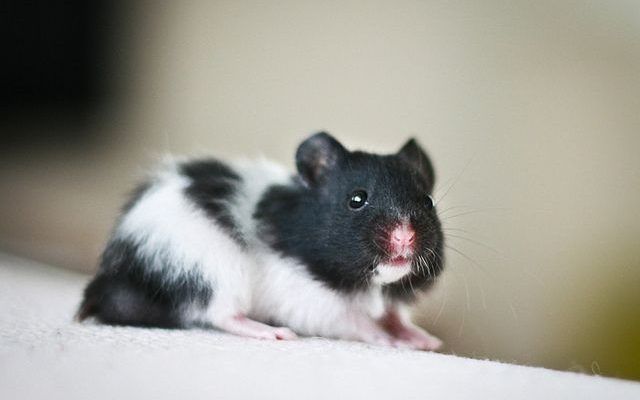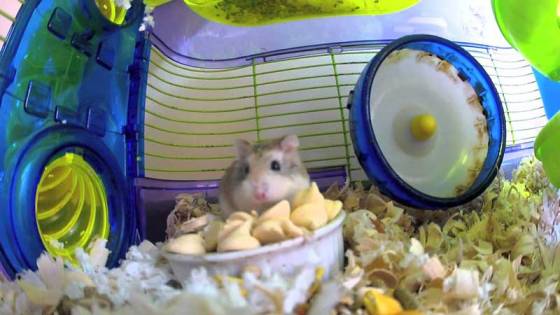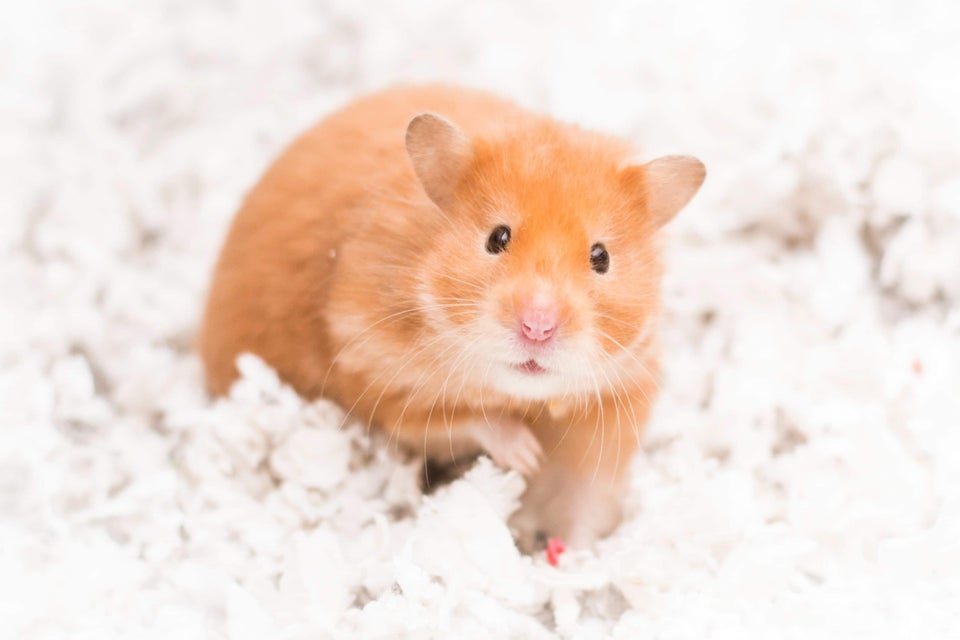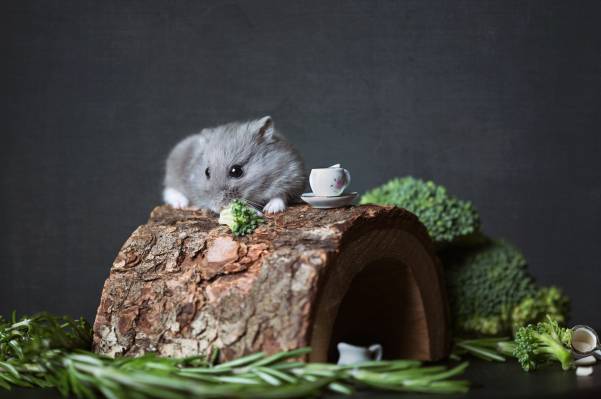Connect with a verified veterinarian in minutes. Licensed vets are available 24/7 to answer your questions. No need to worry about your furry family member.
Are you thinking about adopting a panda hamster but aren’t sure how to care for one? If so, then you’ve come to the right place!
Whether you’re thinking about adopting one of these adorable critters, or you are the new pet parent of a panda hamster, you’ll find information on how to care for your new fur baby here!
What is a Panda Hamster?
The Panda hamster is related to the Syrian hamster. They are colored just like a panda bear—black and white! They’re so adorable! Their body is black, with patches of white on their stomach and feet.
These little guys are nocturnal, which means they’re more active at night. So, it’s not a good idea to disturb your panda hammie during the day. He may be on the grouchy side, as they prefer to be left alone when resting. They sleep most of the day.
Panda hamsters usually grow to about 5-6 inches long, and they weigh about 5-7 oz. They have a rather round body, but this does not mean the hamster is fat. A panda hamster’s body is naturally rounded. They have large ears that stand up on their heads, and they have a very small tail that hard to find in all their fur.
Just like other types of hamsters, the panda bear hammie can be aggressive on occasion. For this reason, they really don’t make very good pets for younger children. However, when your hammie has been properly socialized, he will be happy to play with almost anyone.
But do be careful when handling your hamster. They don’t all enjoy being handled. And they may bite if they’re startled, especially if you wake them up. If your hammie is resting or sleeping, it’s best not to bother him. He will definitely be grumpy and could become aggressive.
When it comes to curiosity, the panda bear hamster is filled to overflowing with wonder! They are also very active, which means they require plenty of toys for enrichment. One of the best toys for a hammie is a wheel that he can run on. Make sure the wheel you buy is the right size for your panda hamster, or he could be hurt or injured when using the wheel.
Panda hamsters, like other types of hamsters, prefer to live alone. They really don’t do well with others of their own kind. This means you should have only one hamster per cage. If there are two in the same cage, they will fight, possibly to the death.
Panda hamsters have a life expectancy of about 2-3 years, though some can live up to four years.
These are the basic facts about your hammie baby! Now, let’s move on to learn more about how to take care of your fur baby!
How to Care for a Panda Hamster
In this section, we’ll take a look at everything your panda hamster needs to be happy and healthy! Let’s start off with his home—the cage.

Review symptoms, medications & behavior to keep your pets healthy with a Vet Online in just minutes.
Ask a Vet Live NowCage Type & Size
The best type of cage for your panda hamster is a wire cage, which has a plastic bottom. This is the best cage for airflow, which doesn’t overheat as the glass aquarium cages do. The wire cage is extremely easy to clean and is very secure. You don’t want your hammie escaping!
The ventilation provided by a wire cage is essential. Those cute plastic hamster cages with cute tunnels and tubes, compartments, and more don’t allow airflow through the cage. This means the hamster suffers from poor air quality. What’s more, the sides of a plastic (or glass) cage can condense with moisture, which is also bad for your hammie.
The cage needs to be a minimum of 24”x12” and at least 12” tall. However, because hamsters are so active, a larger cage is better. Panda hammies need plenty of space to run and play.
You’ll also need to buy a substrate for the cage. The best bedding is pelleted or chipped paper product litter or shredded paper. It’s possible your hammie could have allergies to his bedding. If that’s the case, then buy plain, white kleenex that has no perfume, added oils, etc. Just tear these up a bit and make sure to put plenty of these into the cage for your hammie to bed down comfortably.
Panda Hamster Diet
The best diet for your panda hamster is one made especially for hammies. You can find commercial pellets at the pet shop, at the grocery store, or online. Hamsters also enjoy eating Timothy hay. Food should be placed in a food bowl to keep the cage cleaner.
You can also provide some fresh food for your hamster, but keep these to a minimum. The reason for this is that if a hamster eats too much fresh food, then he could develop diarrhea, which is lethal to hamsters. For this reason, your hammie can enjoy tiny amounts of apple, pear, peach, carrot, and broccoli as a once-in-a-while treat. Don’t feed these to your hamster every day.
In addition, never feed your panda hamster foods that are high in sugar, such as donuts, cakes, cookies, etc. These could make your hammie very sick. It’s also best to avoid foods high in fat and salt for the same reason.
Your panda hamster will also need fresh water available each day, so be sure to have a water bottle that’s made especially for rodents.
Also, remember to get something for your hamster to chew on each day. You can find untreated softwood or coconut shells at the pet shop that are perfect for your hamster. A hammie’s teeth grow all the time. For this reason, your panda hamster has to chew on things every day in order to keep his teeth from growing too long.
Keep Your Panda Hamster’s Cage Clean
While it’s not fun to keep your hamster’s cage clean, it’s also not healthy for him to live in a dirty house. The cage will need to be cleaned of uneaten food daily. And then, once a week, the cage will need to be emptied and washed with mild soap, and rinsed thoroughly. Your fur baby will need to be housed in a hamster carrier or a small cage while you clean his house.
There you have it! By following the care outlined in this article, you’re sure to have a happy, healthy panda hammie!
Connect with a verified veterinarian in minutes. Licensed vets are available 24/7 to answer your questions. No need to worry about your furry family member.

Kim
Kim is a talented author, who loves animals especially dogs. She engaged in writing books and articles relating to animals a decade ago. Kim resides in Chicago with her husband and son. The family is the proud owner of a dog and a parrot (Jack and Lily). Kim wanted more than these two pets, but her husband put his foot down... She often visits elementary schools to talk to the kids about what she learned about pets and how they could learn from them.
Review symptoms, medications & behavior to keep your pets healthy with a Vet Online in just minutes.
Ask a Vet Live Now




